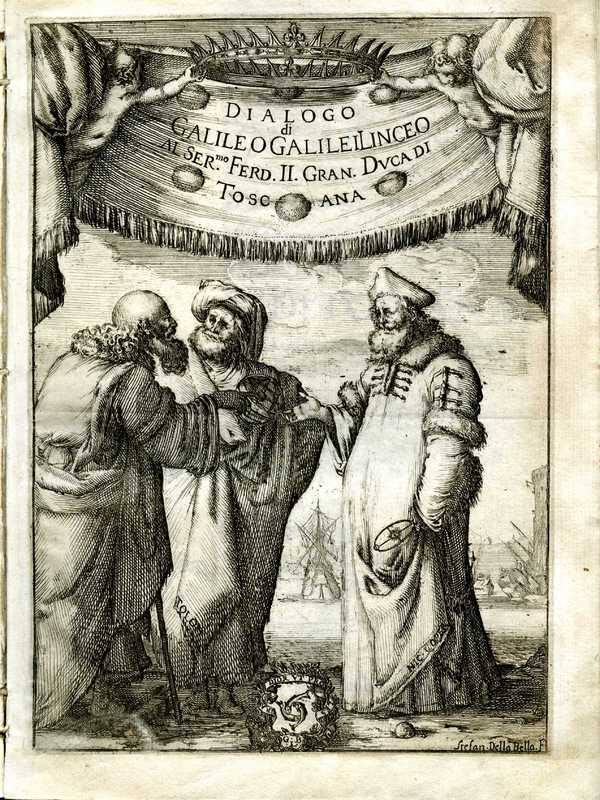"A revolution in cosmology"
In a way, the word “revolution” is a misnomer. How can a revolution take several centuries? But the term “Scientific Revolution” is a convenient way of pointing to a series of events in early-modern Europe that changed knowledge about nature from a static, backward-looking corpus to a dynamic body of theories and methods—something we recognize as “science.”
Scholars have argued about the dates of this revolution. Some have cast their net very wide indeed, arguing that it began in the High Middle Ages, say around 1300, and was not complete until about 1800. A more restricted time span is reflected in this exhibit. As a convenient starting point there is the publication of Nicholas Copernicus’s book, De Revolutionibus Orbium Coelestium in 1543, represented here with the second edition in 1566. Copernicus's argument that it is the Sun, not the Earth, that is the center of the universe—a cosmological claim that was initially accepted by very few. Nevertheless, the book was a complete system of technical mathematical astronomy that led to an improvement of the tables predicting the positions of the planets. Only slowly did thinkers begin to feel comfortable with the idea of a moving Earth.
By the turn of the seventeenth century, a growing number of astronomers and philosophers accepted Copernicus’s cosmology, and the debate was heating up. The stakes were high, because the churches by and large took a stand against Copernicus on grounds of Scripture and tradition. The telescopic discoveries of Galileo, most importantly sunspots and the earth-like appearance of the Moon (which showed that the heavens were not perfect and unchanging) and the moons of Jupiter (which proved that no matter what world system one believed in, there was more than one center of motion) brought matters to a head. When Galileo published his Dialogue Concerning the Two Chief World Systems in 1632, he was tried by the Inquisition and condemned to life imprisonment (which was commuted to house arrest).
In the course of the seventeenth century, this new cosmology became the dominant one. There was, however, the daunting job of underpinning this cosmology with a new physics, and this entailed a new metaphysics and epistemology. The crucial work in this process was Isaac Newton’s Mathematical Principles of Natural Philosophy, published in 1687. For the first time now, there was a consistent physics that could explain how the heavens and the Earth moved and from which predictions of planetary positions could be derived. At the same time, experiments became an accepted method of producing new knowledge and checking old knowledge.
Controversy did not disappear from natural philosophy. Newton’s great achievement rested on axioms, most notably absolute space and universal gravitation that were by no means accepted by all of his colleagues. And was light a stream of particles as Newton would have it, or waves in a medium as Christiaan Huygens believed? Indeed, science has never since been free of controversies.
Dr. Albert Van Helden, Rice professor emeritus of history, was instrumental in the acquisition of many of the books in the History of Science collection. He has published extensively on the history of astronomy, and on the invention and development of the telescope. He is closely associated with the Galileo Project at Rice University that examines the history, art, and culture of Galileo and of science in 17th century Italy. http://galileo.rice.edu/

